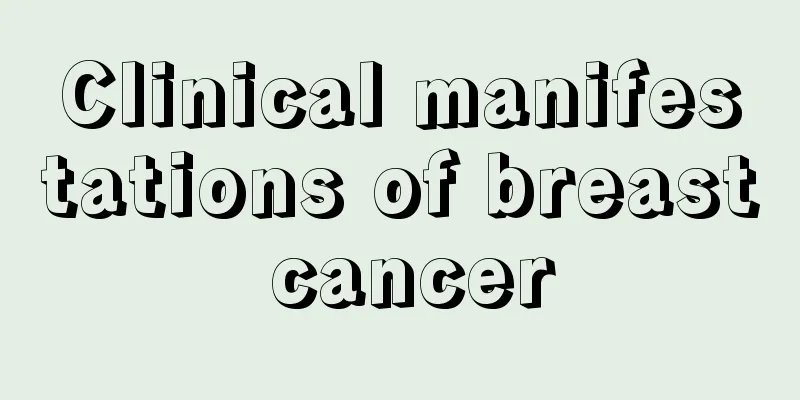What is the definition of cardiopulmonary resuscitation?

|
The definition of cardiopulmonary resuscitation is an emergency treatment method when a patient has no breathing or heartbeat. The patient's heartbeat is restored by pressing the patient's chest. Artificial respiration is also required when necessary. If the patient does not receive timely treatment, it may easily lead to life-threatening danger. Cardiopulmonary resuscitation also requires mastering the techniques and steps to help the patient restore breathing and heartbeat. What is the definition of cardiopulmonary resuscitation? Cardiopulmonary resuscitation (CPR) is a key rescue measure for critically ill patients with respiratory and cardiac arrest. It involves chest compression to form temporary artificial circulation and restore spontaneous beats, artificial respiration instead of spontaneous respiration, rapid electric defibrillation to convert ventricular fibrillation, and the early use of vasoactive drugs to restore spontaneous circulation. The goal of cardiopulmonary resuscitation is to open the airway and restore breathing and circulation. People can only perform CPR on others if they have a full understanding of CPR and have received training in this area. Cardiopulmonary resuscitation = (clearing the airway) + artificial respiration + chest compression + subsequent professional medication There is a 1.5 second interval between each breath, during which the rescuer should take a deep breath himself so that he can continue mouth-to-mouth breathing until professional rescuers arrive. When performing mouth-to-mouth artificial respiration, a respiratory membrane must be used to prevent the spread of bacteria in the patient's body. In the absence of a respiratory membrane to protect you, the first aider does not need to perform artificial respiration. If there is a foreign object in the casualty's mouth, the casualty should be turned to one side (either left or right) and the foreign object should be removed. If there are too many foreign objects, mouth-to-nose artificial respiration can be performed. That is, cover the injured person's nose with your mouth and perform artificial respiration. Establishing an effective human cycle The easiest and most reliable way to check whether the heart is beating is to examine the carotid artery. The rescuer places 2-3 fingers between the patient's trachea and neck muscles and presses gently for at least 10 seconds. If the patient's heart stops beating, the rescuer should press the lower 1/2 of the injured person's sternum. If the heart cannot be restarted, chest compressions are needed to stimulate blood flow to the heart and large blood vessels. To maintain the minimum blood requirement for major organs such as the heart and brain. The first aider should kneel on one side of the injured person's torso with his legs slightly apart and his center of gravity moved forward. He should then choose the location for external chest compression: first use the middle and index fingers of his left hand to mark the lower edge of the ribs, then place the heel of his right palm on the lower 1/2 of the sternum, then place his left hand on his right hand, interlace his fingers, and clench his right hand. Do not bend your elbows when pressing. Press down through the heel of your hand, and your fingers should lift away from your chest. Method of external chest compression: The first aider's arms are placed 1/2 below the patient's sternum, with both elbows straight. Use the weight of the upper body to press down vertically. For an adult of medium weight, the depth of pressure should be greater than 5 cm. Then quickly relax, release the pressure, and allow the chest to return to its original position. Repeat this rhythmically, with the compression and relaxation time being roughly equal and the frequency being no less than 100 times per minute. One-person CPR method: When there is only one rescuer performing CPR on a patient, he or she should perform 30 chest compressions and 2 artificial respirations alternately. Two-person CPR method: When two first responders are performing CPR on a patient, the two people should first be in symmetrical positions to facilitate switching. At this time, one person performs chest compressions; another person performs artificial respiration. Two people can cooperate by counting 1, 2, 3, compressing the heart 30 times each time and performing mouth-to-mouth or mouth-to-nose artificial respiration twice. ) In addition, before performing cardiopulmonary resuscitation, the injured person should be placed in a supine position, and care should be taken to protect the injured person's spine during recovery. First, place the injured person's legs in a supine position, then support the injured person's neck with one hand and use the other hand to turn the injured person's torso. If the casualty suffers from heart disease (not cardiovascular disease), chest compressions should not be performed. |
<<: Briefly describe the steps of cardiopulmonary resuscitation
>>: Briefly describe the precautions for cardiopulmonary resuscitation
Recommend
Girls put toothpaste on the soles of their feet
There are many problems in the human body. People...
Is it normal not to have menopause at 60?
If a woman goes through menopause between the age...
Is it normal to have higher blood sugar in the morning than in the evening?
There are many factors that affect a person's...
What is hydatidiform mole and what adverse effects does it have on the health of the fetus and the mother?
The most feared thing for pregnant women is hydat...
What should patients with colorectal cancer pay attention to in their daily lives
The cause of colorectal cancer is very complex an...
Oral and maxillary tumors
The oral cavity is a very important part of the h...
How to treat yellowing of the whites of the eyes?
Some people in real life have yellow whites of th...
What is the normal blood sugar level after fasting for 2 hours?
Many people do not have a particularly good under...
Discussing the causes of pancreatic cancer from the death of Steve Jobs
A piece of news shook the fragile nerves of the w...
How to use hairpins
Every woman wants to have a beautiful hairstyle, ...
What is the reason why the esophagus is often scratched by food?
The esophagus is an important organ in the human ...
What are the symptoms of ankylosing spondylitis
Ankylosing spondylitis is also known as ankylosin...
Which Chinese medicine is most effective in treating liver cancer? A complete list of Chinese herbal medicines for treating liver cancer
Many people like to use traditional Chinese medic...
Massage techniques for calf pain
You will often feel sore calves, especially after...
What is the reason for sudden watery bowel movements
Sudden watery stool is caused by excessive diarrh...









